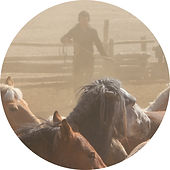

SEE OUR LATEST ARTICLE ON THE ORIGINS OF MODERN DONKEYS
@Science
About:
The human-horse relationship in History
PEGASUS is an ERC-funded, five-year research project headed by Professor Ludovic Orlando, both appointed at the Centre for GeoGenetics, University of Copenhagen, Denmark, and the CNRS AMIS laboratory, University of Toulouse, France.
This project will undertake to truly merge approaches in humanities and biosciences for the first time, aiming at understanding how humans forged the modern horse through history, from early domestication times to the advent of modern breeds. Since horses represent the animal that perhaps most impacted history, PEGASUS will in turn investigate how novel equine traits and/or technologies circled back to humans, empowering warfare, agriculture, and transportation.
The project has officially started on December 1st, 2016, and will include 31 partners and collaborators, spread across 10 countries. These, and the 4 additional researchers to-be-hired, will provide expertise in the complementary fields of ancient DNA, genetics, history, and archeology. Due to the covid-19 pandemics, the project is extended until November 30th, 2022.
Want to join in? Share samples and/or material? Please contact us.
Official Project Summary

Background
The horse provided us with rapid transportation, an almost unrivaled secondary product that tremendously impacted the politico-economical trajectory of our societies, revolutionizing the circulation of ideas, people, languages, religions and communication. Horse chariotry and cavalry also changed warfare and beyond the battlefield new equestrian technologies have stimulated agricultural productivity. However, the 5,500 year long history of horse domestication and management, which transformed the natural evolutionary trajectory of wild horses into the more than 625 domestic breeds living today, is difficult to reconstruct from archaeology, history and modern genetics alone. Yet, with archaeogenetics, one can access the genetic information from past individuals and track in great detail past population trajectories.

Approach
In this project, we propose to build on the latest advances in the analysis of ancient DNA molecules to gather new genomic, epigenomic and metagenomic information from ancient horses. This will be integrated with archaeozoological, isotopic and historical data to enhance our understanding of the multiple processes underlying the transformation of the animal that perhaps most impacted our history.

Main Objectives
Starting from the characterization of pre-domestic populations of wild horses, we will evaluate the genomic and dietary impact of early domestication stages and will explore whether horses were independently domesticated in Iberia and the Pontic-Caspian steppe. We will follow how the emergence of chariotry and the development of heavy cavalry impacted the horse’s behavioural, physiological and biological makeup. We will reveal the horse characteristics that were preferred in various historical contexts and will investigate a diversity of management strategies and husbandry conditions to reveal their impact on horses, from classical and late antique periods until the recent creation of modern breeds by means of intensive selective breeding.
Work

PEGASUS leverages on the latest advances in ancient DNA research to obtain genome-scale data from hundreds of fossil specimens spanning the whole temporal and geographical range of horse domestication.

We are using state-of-the-art methods in ancient DNA research to time-slice the past and follow changes in the genomes, epigenomes and microbiomes of ancient horses as they were modified by human activities.

A vast amount of documents, directly or indirectly related to horses, and including Latin and Greek-language documentary and literary papyri, manorial accounts, tax assessment rolls, art work, and livestock reports from veterinary schools, will provide invaluable information about the social, economical and cultural background underlying horse management.

We are utilizing a whole range of methods in archaeological sciences, including Geometric MorphoMetrics (GMM), radiocarbon dating and isotopic analyses.

Genome-scale data from ancient specimens will be generated using Illumina sequencing technologies and a combination of shotgun sequencing and target-enrichment approaches.

We are gathering an unprecedented collection of horse fossil specimens across Eurasia. In the long-term, this will provide the largest panel of horses studied both at the morphological, isotopic and genetic level.
Contact
Prof. Ludovic Orlando
Centre for Anthropobiology and Genomics of Toulouse
CAGT, CNRS UMR 5288
University of Toulouse, France
Tel: +33628179510


